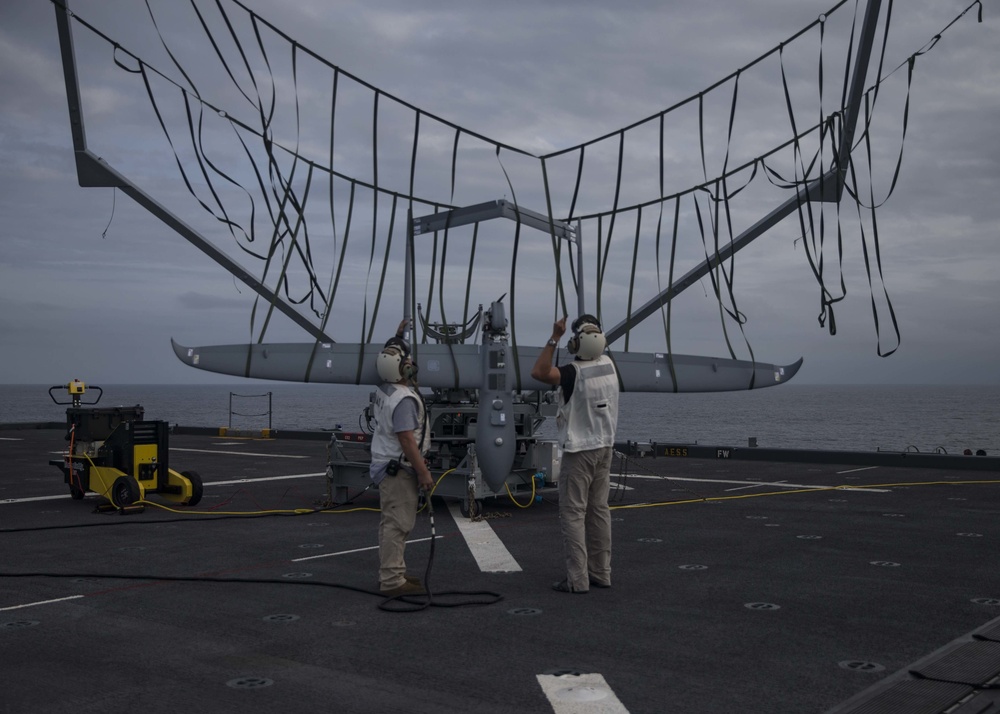
A Textron Aerosonde Unmanned Aerial Surveillance (UAS) vehicle, named Buck G, returns to the Expeditionary Sea Base ship USS Hershel “Woody” Williams (ESB-4) from a 10- hour night surveillance in the Atlantic Ocean on Sept. 26, 2020. (Photo: U.S. Marine Corps by Sgt. Megan Roses/Released)
The Navy this week issued a Request for Information (RFI) that aims to increase the number of partners to provide small unmanned aircraft systems (UAS) performing intelligence, surveillance and reconnaissance (ISR) missions for the Navy and Marine Corps.
The Jan. 21 RFI said the Navy is working to ultimately competitively procure Contractor Owned Contractor Operated (COCO) services to provide UAS ISR services for the Navy and Marine Corps Small Tactical Unmanned Aircraft Systems (STUAS) Program Office (PMA-263).
This follows the Navy’s initial notice on the issue in December, when it previewed a January virtual industry day, which was planned to be followed by two RFI’s to assess potential vendors capable of meeting current ISR requirements and future ISR requirements, respectively. The latest RFI covers expanding current requirements.
The industry day occurred on Jan. 16, after it was postponed from Jan. 8.
The latest notice pointed out the current COCO UAS ISR services are being delivered under March 2021 performance-based Basic Ordering Agreements (BOAs) with Boeing’s Insitu, Inc. and Textron Systems. It said these firm-fixed-price contracts will expire in March 2026 and the RFI aims to award more BOAs to follow the current contract periods.
The RFI said contractors will be responsible for resources to produce sensor data like trained personnel, non-developmental UAS equipment, certifications, operation and maintenance, spares and product support.
“Contracted services would be in direct support of ISR missions requiring around the clock imagery and other sensor capability in support of those missions. Contractors shall be capable of providing ISR services on a normal and surge basis, day and night, 24 hours a day, seven days a week,” the notice said.
The notice updated minimum requirements for the ISR services, including maintaining a 75 nautical mile range from a ground control station at land-based launch sites with a single vehicle or sea -based operations, 10-hour time on station at maximum range, ability to operate in a GPS-contested or degraded situations up to a minimum of 74dB for all flight phases, operate with commonly available fuels at forward-deployed locations, and operate at technology readiness level (TRL) eight.
Interested parties are to submit brief capability statement packages by Feb. 5.
The submissions should list factors including experience with ISR services; TRL of a candidate UAS; system anti-jam capabilities; details of air vehicle operations, range, and fielding requirements; software information; infrastructure requirements and provide sparing requirements based on 9,000 flight-hours per year per site for land-based and 2,400 flight-hours per year for ship-based ISR services.
A version of this story originally appeared in affiliate publication Defense Daily.







